995 scholarly books by The Institution of Engineering and Technology and 19
have author last names that start with I
995 scholarly books by The Institution of Engineering and Technology and 19
995 scholarly books by The Institution of Engineering and Technology
19 have author last names that start with I have author last names that start with I
19 have author last names that start with I have author last names that start with I
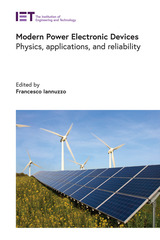
Modern Power Electronic Devices
Physics, applications, and reliability
Francesco Iannuzzo
The Institution of Engineering and Technology, 2020
Power devices are key to modern power systems, performing essential functions such as inverting and changing voltages, buffering, and switching. The increasing complexity of power systems, with distributed renewable generation on the rise, is posing challenges to these devices. In recent years, several new devices have emerged, including wide bandgap devices, each with advantages and weaknesses depending on circumstances and applications.
[more]
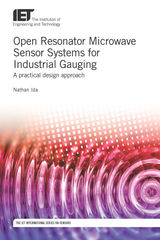
Open Resonator Microwave Sensor Systems for Industrial Gauging
A practical design approach
Nathan Ida
The Institution of Engineering and Technology, 2018
Open resonator microwave sensors allow accurate sensing, monitoring and measurement of properties such as dimension and moisture content in materials including dielectrics, rubber, polymers, paper, fabrics and wood veneers. This book presents a coherent and entirely practical approach to the design and use of systems based on these sensors in industrial environments, showing how they can provide meaningful, accurate and industrially-viable methods of gauging.
[more]
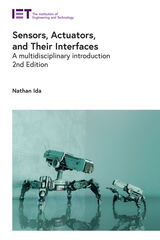
Sensors, Actuators, and Their Interfaces
A multidisciplinary introduction
Nathan Ida
The Institution of Engineering and Technology, 2020
Sensors and actuators are used daily in countless applications to ensure more accurate and reliable workflows and safer environments. Many students and young engineers with engineering and science backgrounds often come prepared with circuits and programming skills but have little knowledge of sensors and sensing strategies and their interfacing.
[more]
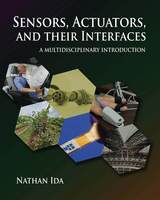
Sensors, Actuators, and their Interfaces
A multidisciplinary introduction
Nathan Ida
The Institution of Engineering and Technology, 2014
As sensors and actuators are normally not (and have not been) treated in academic curricula as a subject in its own right; many students and current professionals often find themselves limited in their knowledge and dealing with topics and issues based on material they may have never encountered. Until now.
[more]

Propagation, Scattering and Diffraction of Electromagnetic Waves
A.S. Ilyinski
The Institution of Engineering and Technology, 1993
This book describes new, highly effective, rigorous analysis methods for electromagnetic wave problems. Examples of their application to the mathematical modelling of micros trip lines, corrugated flexible waveguides, horn antennas, complex-shaped cavity resonators and periodic structures are considered.
[more]
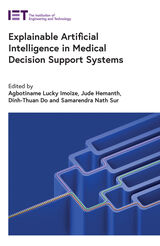
Explainable Artificial Intelligence in Medical Decision Support Systems
Agbotiname Lucky Imoize
The Institution of Engineering and Technology, 2022
Medical decision support systems (MDSS) are computer-based programs that analyse data within a patient's healthcare records to provide questions, prompts, or reminders to assist clinicians at the point of care. Inputting a patient's data, symptoms, or current treatment regimens into an MDSS, clinicians are assisted with the identification or elimination of the most likely potential medical causes, which can enable faster discovery of a set of appropriate diagnoses or treatment plans. Explainable AI (XAI) is a "white box" model of artificial intelligence in which the results of the solution can be understood by the users, who can see an estimate of the weighted importance of each feature on the model's predictions, and understand how the different features interact to arrive at a specific decision.
[more]
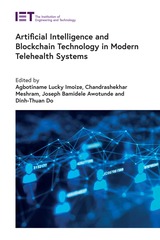
Artificial Intelligence and Blockchain Technology in Modern Telehealth Systems
Agbotiname Lucky Imoize
The Institution of Engineering and Technology, 2024
The expansion of telehealth services is enabling healthcare professionals to consult, diagnose, advise or perform tasks remotely, enabling them to treat more patients in their own homes or consult on cases on the other side of the world. The security of sensitive user information is critical to effective and efficient delivery of healthcare services. Artificial intelligence (AI) and blockchain technology are identified as key drivers of emerging telehealth systems, enabling efficient delivery of telehealth services to billions of patients globally. Specifically, AI facilitates the processing and analysis of complex telehealth data, and blockchain technology offers decentralised, transparent, traceable, reliable, trustful, and provable security to telehealth systems.
[more]

Cybersecurity in Emerging Healthcare Systems
Agbotiname Lucky Imoize
The Institution of Engineering and Technology, 2024
Emerging healthcare networks are interconnected physical systems that use cyber technologies for interaction and functionalities. The proliferation of massive Internet of Things (IoT) devices enables remote and distributed access to cutting-edge diagnostics and treatment options in modern healthcare systems. New security vulnerabilities are emerging due to the increasing complexity of the healthcare architecture, in particular, threats to medical devices and critical infrastructure pose significant concerns owing to their potential risks to patient health and safety. In recent times, patients have been exposed to high risks from attacks capable of disrupting critical medical infrastructure, communications facilities, and services, interfering with medical devices, or compromising sensitive user data.
[more]

Security and Privacy Schemes for Dense 6G Wireless Communication Networks
Agbotiname Lucky Imoize
The Institution of Engineering and Technology, 2023
Fifth generation (5G) wireless networks are now commercialized, and the research focus has shifted towards sixth generation (6G) wireless systems. The integration of sensor nodes and massive machine type communication (MTC) devices (MDs) in ubiquitous 5G networks has facilitated the design of critical enabling technologies to support billions of data-hungry applications. By leveraging sensor nodes in wireless sensor networks (WSNs), sensitive user information can be harvested and transmitted to receivers via WSN-assisted channels, which are often not well secured. Consequently, sensitive user information can be intercepted and used unlawfully. The security and confidentiality measures used for data transmission over existing 5G WSN-assisted channels are limited. 6G systems are envisaged to face fiercer security challenges. In 6G wireless networks, a new set of sensing and precise localization techniques are predicted. Thus, the need to secure user information against adversarial attacks needs to be implemented at the design stage.
[more]
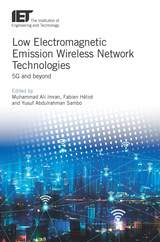
Low Electromagnetic Emission Wireless Network Technologies
5G and beyond
Muhammad Ali Imran
The Institution of Engineering and Technology, 2020
Mobile communication systems rely on radiofrequency waves to operate. Given the popularity and ubiquity of mobile communication devices as well as network densification, the level of Electromagnetic Field (EMF) exposure to the public is expected to rise significantly over the next few years. Although there is no clear evidence linking short-term exposure to EMF emission from wireless communication systems with adverse health effects, the International Agency for Research on Cancer (IARC) has concluded that EMF radiation is possibly carcinogenic. To cope with the concerns of the general public, the European Environmental Agency has recommended non-technical precautionary approaches to minimize exposure to EMF emissions. Rather than relying on these non-technical approaches, EMF, latency, network resilience and connection density, alongside traditional criteria such as spectral efficiency and energy efficiency are expected to take centre stage in the development of 5G systems.
[more]
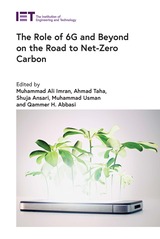
The Role of 6G and Beyond on the Road to Net-Zero Carbon
Muhammad Ali Imran
The Institution of Engineering and Technology, 2023
In the race against climate change, the focus has turned towards achieving the 2050 net-zero carbon target. Achieving net-zero means balancing between the amount of greenhouse gas removed from the atmosphere and those produced and released. Efforts are needed on both sides to find suitable solutions to reduce released emissions and to remove current emissions from the atmosphere. A collective effort revolving around the utilisation of new technologies, particularly in wireless and mobile communications, is needed to achieve the net-zero carbon target.
[more]
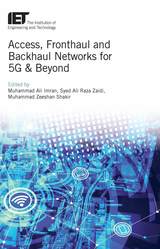
Access, Fronthaul and Backhaul Networks for 5G & Beyond
Muhammad Ali Imran
The Institution of Engineering and Technology, 2017
The widespread use of mobile internet and smart applications has led to an explosive growth in mobile data traffic, which will continue due to the emerging need of connecting people, machines, and applications in an ubiquitous manner through the mobile infrastructure. The efficient and satisfactory operation of all these densely deployed networks hinges on a suitable backhaul and fronthaul provisioning. The research community is working to provide innovative technologies with extensive performance evaluation metrics along with the required standardisation milestones, hardware and components for a fully deployed network by 2020 and beyond.
[more]

Energy Harvesting for Wireless Sensing and Flexible Electronics through Hybrid Technologies
Muhammad Iqbal
The Institution of Engineering and Technology, 2023
As wearable microelectronics are becoming ubiquitous, there is a growing interest in replacing batteries with a means of harnessing power from the user's environment via embedded systems. Efforts have been made to prolong the harvester's operational lifetime, overcoming energy dissipation, lowering resonant frequency, attaining multi-resonant states, and widening the operating frequency bandwidth of the biomechanical energy harvesters. Such technological advances mean harvesting energy is a viable solution for sustainably powering wearable electronics for health and wellbeing applications, such as continuous medical health monitoring, remote sensing, and motion tracking.
[more]

Intellectual Property Rights for Engineers
Vivien Irish
The Institution of Engineering and Technology, 2005
This fully revised and updated edition of Intellectual Property Rights for Engineers addresses recent developments in the area. The book explains the general principles behind the law protecting innovation, quoting cases from the engineering domain in order to clarify legal issues. Chapters outline the basic rights through automatic protection (copyright, design right) and registration systems (patent, registered design, trade mark), and also discusses the issues surrounding confidential information. The book clarifies precisely who owns the rights and how their use is constrained by EC law, and goes on to explain how to license or even litigate when necessary. Finally, strategic aspects for decision-making and management are discussed.
[more]

Neural Network Applications in Control
G.W. Irwin
The Institution of Engineering and Technology, 1995
Neural networks are an exciting technology of growing importance in real industrial situations, particularly in control and systems. This book aims to give a detailed appreciation of the use of neural nets in these applications; it is aimed particularly at those with a control or systems background who wish to gain an insight into the technology in the context of real applications.
[more]
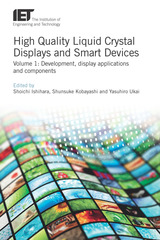
High Quality Liquid Crystal Displays and Smart Devices
Development, display applications and components, Volume 1
Shoichi Ishihara
The Institution of Engineering and Technology, 2019
A liquid-crystal display (LCD) is a flat-panel display or other electronically-modulated optical device that uses the light-modulating properties of liquid crystals. Liquid Crystal Displays are already widely used in consumer electronics, but research and development is still ongoing. The shifting focus of research follows a pattern of improved definition, increased display size, wider viewing angles and faster responses, with improvements in each area influencing the next. There is also growing interest in the use of liquid crystal materials in novel applications including sensing devices, spatial modulators and light-shielding windows.
[more]
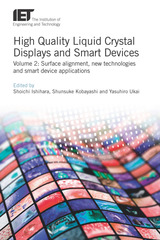
High Quality Liquid Crystal Displays and Smart Devices
Surface alignment, new technologies and smart device applications, Volume 2
Shoichi Ishihara
The Institution of Engineering and Technology, 2019
A liquid-crystal display (LCD) is a flat-panel display or other electronically-modulated optical device that uses the light-modulating properties of liquid crystals. Liquid Crystal Displays are already widely used in consumer electronics, but research and development is still ongoing. The shifting focus of research follows a pattern of improved definition, increased display size, wider viewing angles and faster responses, with improvements in each area influencing the next. There is also growing interest in the use of liquid crystal materials in novel applications including sensing devices, spatial modulators and light-shielding windows.
[more]

Driving Simulators for the Evaluation of Human-Machine Interfaces in Assisted and Automated Vehicles
Toshio Ito
The Institution of Engineering and Technology, 2021
Driving Simulators for the Evaluation of Human-Machine Interfaces in Assisted and Automated Vehicles is a concise reference work on driving simulators, which conveys the technology behind simulator systems used to test driver assistance systems and automated vehicles, including electric vehicles. Coverage includes architecture, computer graphics, evaluation parameters and applied examples.
[more]

Silicon Wafer Bonding Technology for VLSI and MEMS Applications
Subramanian S. Iyer
The Institution of Engineering and Technology, 2002
By bonding a thin wafer of active silicon to a thicker wafer via a layer of insulating oxide to form an SOI structure it is possible to substantially improve the performance and integration of microelectronic circuits produced by very large scale integration (VLSI). For example, the recently announced IBM Power 4 'server-ona- chip' integrates two microprocessors, a high bandwidth system switch, a large memory cache and input/output functions. SOI wafer bonding is also an enabling technology in the rapidly growing field of microelectromechanical systems (MEMS).
[more]
READERS
Browse our collection.
PUBLISHERS
See BiblioVault's publisher services.
STUDENT SERVICES
Files for college accessibility offices.
UChicago Accessibility Resources
home | accessibility | search | about | contact us
BiblioVault ® 2001 - 2024
The University of Chicago Press









